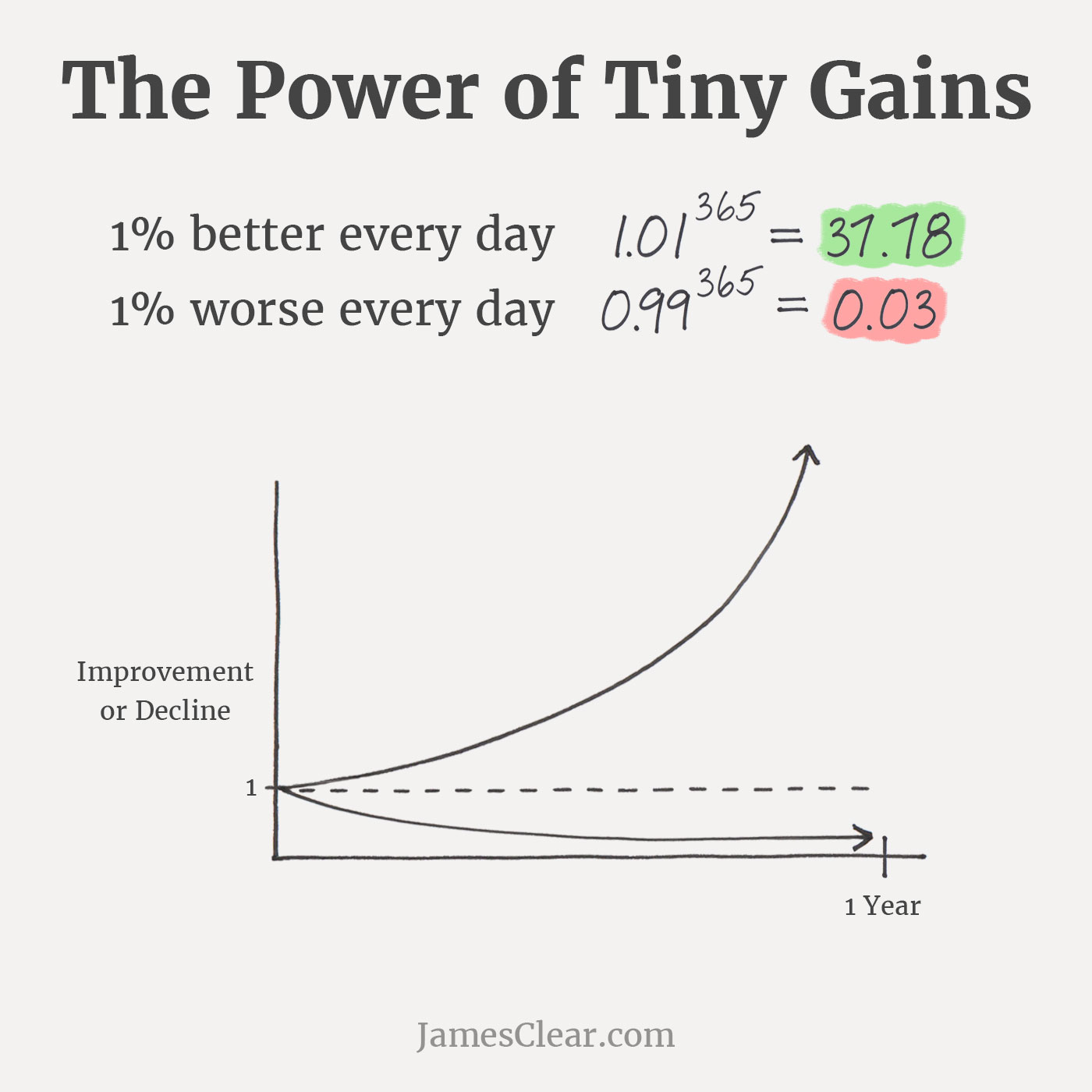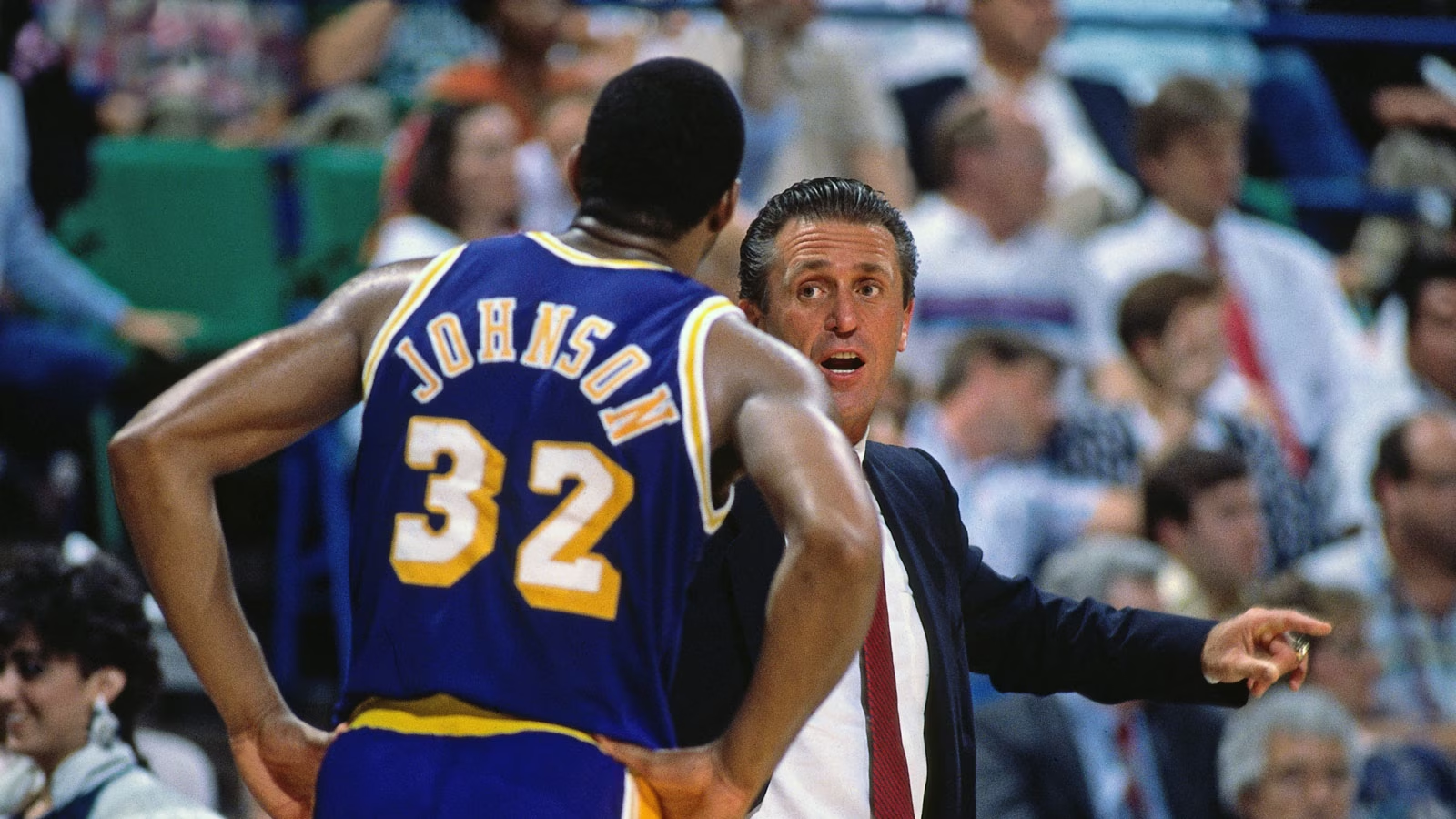Pardon My Humblebrag
We're launching a fresh program that encompasses a range of strategies to generate B2B leads for one of our clients: search optimization, content marketing, drip email, prospecting strategies, and cold calling for lead generation.
Somewhat surprisingly, and for the first time, I find myself doing the pre-shift confabs to provide updates on strategies, data roll-outs, etc. This is a challenging program, so it's all hands on deck.
These early days can be tough going, but we shoot for incremental improvement by tackling modest benchmarks and then moving to the next objective.
This work recalls James Clear's discussions about the 1% framework for understanding the significance of consistent progress over time. I wrote this post this week to motivate the team, and it's posted to our program support site. It's a concept worth revisiting now and then.
1% Daily Improvement Compounds Achievement
1% daily improvement distills the idea that steady progress through small, incremental steps yields outsize results. The magic lies in the compounding nature of steady improvement.
Of course, every child knows Aesop's fable of the tortoise and the hare, so most of us know this concept from a young age. Over time we forget these simple yet powerful ideas as adult pressures trick us into growth hacking, rapid weight loss, or crypto day trading.
As we strive to lock in the structure of our program, it's easy to get frustrated when rapid transformation doesn't materialize, when our efforts don't produce immediate results. But durable success is more likely to be achieved through steady, incremental progress.
How it Works
Modest regular improvements — even 1% each day — accumulate to produce massive advancements over time.
Month Result:
Starting with an initial baseline, improving by 1% daily for 30 consecutive days leads to significant growth. The compounding effect of consistent progress results in a total improvement of approximately 30.5% at the end of the month.
What began as a modest, very achievable daily enhancement gradually compounds, leading to a significant leap forward.
Quarter Result:
With 90 days of continuous 1% daily improvement, the compounding effect is even more pronounced. By consistently building on daily progress, the cumulative growth rate results in a 195% improvement over the quarter. These gains usually occur when going from zero to one, where you build something from nothing.

Year Result:
This improbable extrapolation yields an astounding improvement of 37 times better than the start. When applying the 1% daily improvement mindset over the span of a year, the results are truly transformative.
What may have started as seemingly insignificant daily improvements gradually snowball into an exponential leap forward, propelling individuals far beyond their initial starting point.
From Goats to GOATs: British Bicycling Team
The Harvard Business Review, explains how marginal gains helped the British Cycling team turn mediocrity into knightship-worthy success
By the 2008 Olympic Games in Beijing, the team won gold medals in 60% of their events. In the 2012 London Olympics, they set nine Olympic records and seven world records.

It wasn't always like that.
When the team's coach, Sir Dave Brailsford became head of British Cycling in 2002 Brailsford, the team was so poorly regarded that competitive bicycle brands didn't want the team using their equipment. They figured the team's performance would reflect on their bikes.
When the team first began, a gold medal at the Olympics seemed like an ambitious goal. Brailsford, decided to focus on continuous, marginal improvements rather than drastic changes. The philosophy was about consistent progression rather than instant perfection, based on the idea of 'Kaizen'—a Japanese philosophy of continuous improvement.
In pursuit of these marginal gains, they used a wind tunnel to enhance their aerodynamics slightly. They spotted dust interfering with bike maintenance, so they painted the floor white to identify and eliminate it easily. A surgeon was even hired to teach athletes how to wash their hands to prevent illness during competitions properly. Handshakes were avoided during the Olympics for the same reason.
Attention was given to every detail, including food preparation, and athletes were provided with the same mattresses and pillows to ensure consistent sleep posture. They searched for small improvements in every aspect and believed these would cumulatively give them a competitive advantage.
The 1% Plan to Dominate the NBA
In his book Atomic Habits, James Clear maps the trajectory of the 1986 Los Angeles Lakers.
That team had, arguably, the most gifted line-up in basketball: Kareem Abdul-Jabbar, A.C. Green, Magic Johnson, Byron Scott, and James Worthy, yet lost the Western Conference Finals. Their head coach, Pat Riley, needed to find a way to lift his players' performance. So, he introduced a system called "Career Best Effort" or CBE.

CBE is all about tracking each player's stats since high school, figuring out their "normal" level, and then challenging them to do a bit better, about 1% over the season. But it wasn't just about numbers or scoring more points. CBE was also about those small heroic deeds during the game, like diving for loose balls or assisting a teammate.
Every player had a CBE number based on their game stats. The goal was to increase this number by 1% throughout the season. Coach Pat took it up a notch. He compared the players not just with their past performances but also with other league players.
The results were impressive. Just eight months into the CBE program, the Lakers were NBA champions. The following year, they did it again. So what made the difference? Consistency. Sticking to what works and making small improvements every time. It may not be glamorous, but it certainly gets the job done.
Consistency is a Superpower
Consistency is a key component of regular, incremental growth. It entails making small, continuous improvements a daily habit. These small improvements add up to significant gains over time.
The practice operates at the individual level, yet organizations also benefit from this approach. Nothing can be more demotivating to a team than swinging for the fences. Truth be told, the Hail-Mary pass or the winning goal in the final seconds rarely happens off the pitch.
Moreover, the discipline of scanning the horizon for constant improvement combats stagnation and complacency, the enemies of excellence. This is the steady work of making our programs more efficient and higher quality.
It's not easy, as James Clear notes:
Sticking with the fundamentals is not impressive. Falling in love with boredom is not sexy. Getting one percent better isn't going to make headlines.
There is one thing about it though: it works.
Consistency ensures that progress becomes a natural part of the outsourcing process, leading to long-term success.
Take It Away
In a nutshell, the idea of 1% daily improvement is like a secret sauce for success. It's all about making those tiny, incremental gains each day that add up to something huge over time, like a tortoise beating a hare.
The British Cycling team didn't become champions overnight. They focused on making marginal gains in every aspect of their game. They fine-tuned their aerodynamics, paid attention to the smallest details, and even hired a surgeon to teach them how to wash their hands properly.
The Los Angeles Lakers had a star-studded lineup, but they still needed that extra edge. So, their coach challenged them to improve by just 1% throughout the season. Not only did they boost their stats, but they also hustled for those loose balls and supported their teammates. And guess what? They became NBA champs.
Consistency is the name of the game here. It's about sticking to what works and making small improvements day in and day out. It may not be glamorous or make headlines, but it gets the job done.
Boring? Maybe. Effective? Absolutely.



